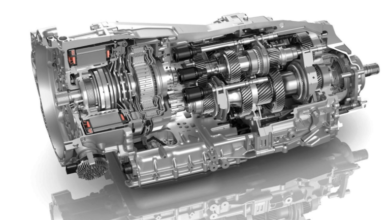At&T Vs Xfinity: Comparison Between At&T and Xfinity Internet Services

The comparison between AT&T and Xfinity internet services reveals significant distinctions that can greatly influence consumer choice. While AT&T’s fiber optic network is designed for high-speed performance and low latency, Xfinity offers competitive pricing structures that may appeal to budget-conscious users. Additionally, both providers exhibit strengths in different geographical areas, which raises questions about their overall reliability and customer satisfaction. Exploring the nuances of speed, pricing, and service quality may provide insights that are crucial for making an informed decision. What factors will ultimately determine which provider is the better fit for your needs?
Speed Comparison
When evaluating the speed capabilities of AT&T and Xfinity, one may wonder how their offerings stack up against each other in real-world scenarios.
AT&T leverages fiber optic technology, providing higher bandwidth and lower latency issues compared to Xfinity’s cable-based services.
This distinction is crucial for users who demand stable connections for activities such as gaming and streaming, where speed and reliability are paramount.
Pricing Analysis
Pricing structures for AT&T and Xfinity reveal significant differences that potential customers should consider when choosing a provider.
AT&T typically offers competitive promotional offers with no long-term contract terms, allowing flexibility for users.
Conversely, Xfinity may entice customers with lower initial rates, but these often come with lengthy contracts that could limit consumer freedom.
Understanding these nuances is crucial for informed decision-making.
Availability Overview
Availability is a critical factor that influences the decision-making process for customers considering AT&T or Xfinity as their internet service provider.
Both companies boast extensive coverage areas; however, the density of their networks varies.
AT&T focuses on fiber-optic technology, enhancing network reliability in urban regions, while Xfinity provides a robust cable infrastructure, ensuring broader accessibility in suburban and rural markets.
See also At&T Versus Xfinity: Comparison of At&T and Xfinity Internet Services
Customer Service Evaluation
In evaluating customer service, both AT&T and Xfinity present differing approaches that significantly impact user experience.
AT&T emphasizes customer satisfaction through comprehensive support options, while Xfinity focuses on rapid support responsiveness.
However, user feedback indicates mixed results, with some praising AT&T’s thoroughness and others highlighting Xfinity’s efficiency.
Ultimately, the choice may depend on individual preferences regarding service expectations and urgency in resolution.
Conclusion
In the competitive landscape of internet service providers, the choice between AT&T and Xfinity emerges as a pivotal decision for consumers. With AT&T’s fiber optic advantage offering superior speed and reliability, particularly in urban settings, it stands as a beacon of performance. Conversely, Xfinity’s accessibility in suburban and rural areas presents a compelling option for those in less urbanized regions. Ultimately, the decision hinges on specific needs, where performance meets accessibility in an intricate dance of connectivity.







